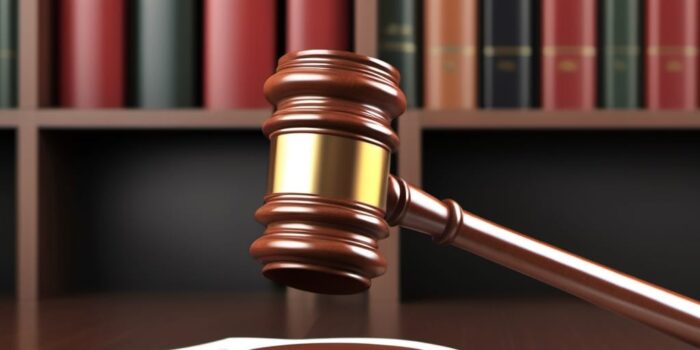Provisional damages are a unique and complex aspect of the legal system, particularly in the realm of personal injury law. They are designed to provide a measure of compensation to a claimant who has suffered harm, but where the full extent of that harm may not yet be known. This article will delve into the intricacies of provisional damages, providing a comprehensive understanding of this important legal concept.
The term ‘provisional damages’ may sound somewhat abstract, but it has a very specific meaning in the context of law. It refers to a type of damages awarded by a court in a personal injury case, where there is a chance that the claimant may develop a serious disease or suffer a serious deterioration in their condition in the future. The award is ‘provisional’ because it allows the claimant to return to court at a later date to seek further damages if their condition worsens.
Origins and Purpose of Provisional Damages
The concept of provisional damages originated in English law, as a response to the unique challenges posed by certain types of personal injury cases. In many such cases, the claimant’s condition may deteriorate over time, or they may develop a new and serious disease as a result of the original injury. The traditional approach to damages, where a single lump sum is awarded to cover all future harm, was seen as inadequate in these situations.
The purpose of provisional damages is therefore twofold. Firstly, they provide immediate compensation to the claimant for the harm they have already suffered. Secondly, they provide a safety net, allowing the claimant to return to court to seek further damages if their condition worsens in the future. This ensures that the claimant is not left out of pocket if their medical expenses increase or if they suffer additional loss of earnings.
Development of Provisional Damages
The concept of provisional damages has evolved over time, with significant developments occurring in the latter half of the 20th century. The Law Reform (Personal Injuries) Act 1948 introduced the idea of a ‘provisional award’, but it was not until the Administration of Justice Act 1982 that the modern concept of provisional damages was fully established.
Since then, the use of provisional damages has expanded, and they are now a common feature of personal injury litigation. They are particularly important in cases involving industrial diseases, such as asbestos-related conditions, where the full extent of the harm may not become apparent until many years after the original exposure.
Criteria for Awarding Provisional Damages
Not all personal injury cases are eligible for provisional damages. There are specific criteria that must be met, which are set out in the Civil Procedure Rules. These criteria relate to the nature of the claimant’s condition, the likelihood of future deterioration, and the potential impact of such deterioration on the claimant’s life.
Firstly, the claimant must have suffered a personal injury which gives rise to the possibility of serious deterioration in their condition. This could be a physical injury, such as a broken bone, or a psychological injury, such as post-traumatic stress disorder. The key point is that there must be a real risk of future harm, not just a theoretical possibility.
Probability of Future Deterioration
The second criterion is that there must be a real, as opposed to merely speculative, chance of serious deterioration in the claimant’s condition. This is a matter of medical evidence, and it will usually be necessary for the claimant to provide expert testimony to support their claim.
It is not necessary for the claimant to prove that deterioration is more likely than not. Even a relatively small chance of future harm may be sufficient, provided it is a real and substantial risk. However, the less likely the future harm, the smaller the provisional award is likely to be.
Impact of Future Deterioration
The third criterion is that the potential future deterioration must be likely to result in significant additional loss to the claimant. This could be in the form of increased medical expenses, additional loss of earnings, or a reduction in the claimant’s quality of life.
Again, this is a matter of evidence, and the claimant will need to demonstrate the potential impact of future deterioration on their life. This may involve expert testimony, particularly in relation to medical expenses and loss of earnings.
Calculating Provisional Damages
The calculation of provisional damages is a complex process, involving a number of different factors. These include the severity of the claimant’s current condition, the likelihood of future deterioration, the potential impact of such deterioration, and the claimant’s life expectancy.
The starting point for the calculation is the claimant’s current condition. The court will consider the nature and severity of the injury, the impact on the claimant’s life, and any expenses or losses that have already been incurred. This will form the basis of the initial award.
Future Deterioration and Impact
The court will then consider the likelihood of future deterioration and the potential impact of such deterioration. This involves a degree of speculation, as it requires the court to predict future events. However, the court will rely on medical evidence and expert testimony to make as accurate a prediction as possible.
The potential impact of future deterioration is also a key factor. The court will consider the likely increase in medical expenses, the potential for additional loss of earnings, and the likely reduction in the claimant’s quality of life. The greater the potential impact, the larger the provisional award is likely to be.
Life Expectancy
The claimant’s life expectancy is another important factor in the calculation of provisional damages. The longer the claimant is expected to live, the greater the chance of future deterioration, and the larger the provisional award is likely to be.
Again, this is a matter of medical evidence, and it will usually be necessary for the claimant to provide expert testimony on their life expectancy. The court will also take into account the claimant’s age, general health, and lifestyle when assessing life expectancy.
Claiming Further Damages
If the claimant’s condition does deteriorate in the future, they have the right to return to court to claim further damages. This is a key feature of provisional damages, and it provides a safety net for claimants who suffer unexpected harm.
However, the process of claiming further damages is not straightforward. The claimant must prove that their condition has deteriorated in the way predicted, and that this has resulted in additional loss. This will usually require new medical evidence and expert testimony.
Time Limit for Claiming Further Damages
There is a time limit for claiming further damages, which is usually set out in the original court order. This is typically a period of years, but it can be extended if the court thinks it is in the interests of justice to do so.
The time limit is intended to provide certainty for both parties, and to ensure that claims are made within a reasonable time. However, it can be a source of difficulty for claimants, particularly in cases involving slow-developing diseases.
Calculating Further Damages
The calculation of further damages is similar to the calculation of the original provisional award. The court will consider the nature and severity of the deterioration, the impact on the claimant’s life, and any additional expenses or losses that have been incurred.
However, the court will also take into account any changes in the claimant’s circumstances since the original award. This could include changes in the claimant’s health, financial situation, or personal circumstances. The aim is to ensure that the claimant is fully compensated for their loss, but not over-compensated.
Conclusion
Provisional damages are a complex but important aspect of personal injury law. They provide a safety net for claimants who face the risk of future harm, ensuring that they are not left out of pocket if their condition worsens. However, they also pose significant challenges, both in terms of the initial calculation and the process of claiming further damages.
Despite these challenges, provisional damages are a vital tool in ensuring that claimants receive fair and adequate compensation for their injuries. They reflect the reality of personal injury cases, where the full extent of the harm may not be known for many years. By providing a mechanism for claimants to return to court to claim further damages, they ensure that justice is not only done, but seen to be done.
Start Securing Your Future with Clear Legal
Understanding the complexities of provisional damages is just the beginning. At Clear Legal, we embody the principles of ethics, innovation, and quality to guide you through the legal maze with confidence. If you’re facing the uncertainty of a personal injury case and the prospect of future complications, don’t navigate this alone. Request a free consultation today and let us help you secure the compensation you deserve, now and in the future.





